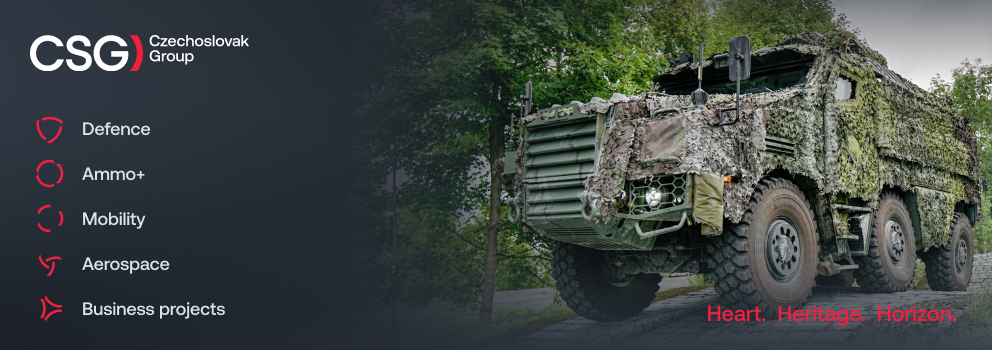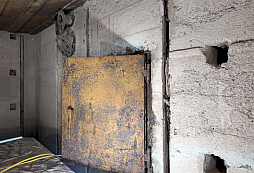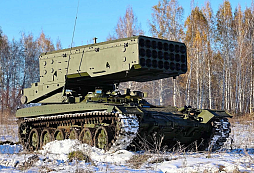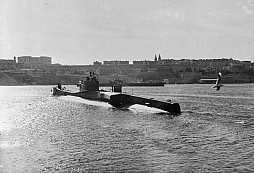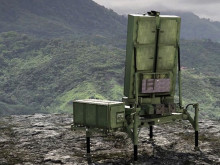The growth of defense spending is one of the main social issues in Slovakia. While the governing coalition is rather skeptical and dismissive of increases, the opposition and the President of the Slovak Republic are more in favor of growth. Recently, in connection with the consolidation of public finances, there has been talk that the Ministry of Defense will also have to make savings and that defense spending may not reach the 2% threshold. With the approval of the draft state budget for 2026, these scenarios have not materialized, at least temporarily, and the Ministry of Defense will have a budget of approximately €2.88 billion in 2026, representing a year-on-year increase of €90.4 million.
Next year, as stated in the approved draft state budget, one of the priorities of the Ministry of Defense will be the modernization and development of the J. A. Reiman University Hospital and Polyclinic in Prešov, where a new military hospital is being built. It is scheduled to open in 2027. Other key projects of the Ministry of Defense next year will include the modernization of the Armed Forces of the Slovak Republic (OS SR). According to available information, the key projects are the purchase of Israeli-made Barak MX medium-range air defense systems, financing the delivery of 8x8 Patria AMV XP combat armored vehicles, CV90 tracked combat vehicles, and medium-range 3D radars. As stated in the draft state budget, the Ministry of Defense's finances are also to be used for the further development of army equipment, the development of communication and information resources, the development of OS SR personnel, and the modernization of infrastructure.
Slovakia to spend 2% of GDP on defense in 2026
A few days ago, the National Council of the Slovak Republic approved the draft state budget for 2026, according to which approximately €2.88 billion should be spent on defense next year, which corresponds to 2% of GDP. Despite differing opinions among individual representatives of the governing coalition and the President of the Slovak Republic on increasing defense spending, this is an important signal to allies and the public that the modernization of the army and Slovakia's defense capabilities will not stagnate. However, in the coming years, investment in defense will have to grow at a faster pace.

The nominally higher funds allocated to the development of Slovakia's defense capabilities, which correspond to 2% of GDP, are an important signal to NATO allies, as emphasized at a recent meeting of the Chief of the General Staff of the Slovak Armed Forces and the President of the Slovak Republic, Peter Pellegrini. According to him, Slovakia must also respond to new threats and strengthen its defense capabilities, which is not possible without modern technology and qualified military personnel. For this reason, the President of the Slovak Republic considers investment in the development of the Slovak Armed Forces' equipment a priority, as the war in Ukraine and recent incidents involving violations of the airspace of several European countries demonstrate that modern warfare requires new ways of responding, for which Slovakia must be prepared. The President of the Slovak Republic also emphasized the importance of interoperability with other NATO countries.

Although total defense spending in Slovakia will increase, the pace of defense investment will have to accelerate in the coming years if Slovakia is to reach the Alliance's required defense spending of 5% of GDP by 2035. The current government coalition led by Prime Minister Robert Fico does not agree with such a dramatic increase in defense spending and says that Slovakia does not need to spend such a high percentage on defense, as it can meet its commitments with much lower spending in this area. Despite Prime Minister Fico's statements, Slovakia agreed to increase defense spending to 5% at this year's NATO summit in The Hague. Defense Minister Robert Kaliňák accepts the increase in defense spending from 2% to 5%, but will choose the path to achieve this that best suits the country's requirements. He cited increased investment in infrastructure or dual-use projects as examples. The current NATO plan also allocates 1.5% of GDP to this area. Military infrastructure has long been one of Slovakia's main problems, and higher defense spending does not necessarily have to be limited to the procurement of weapons systems, as some representatives of the governing coalition have suggested.
Despite the diversity of opinions among Slovak politicians and state representatives, it is important that defense spending does not decline. In recent years, the Slovak Armed Forces have undergone significant modernization, which was unimaginable for many years and received almost no attention. Reducing defense spending would negate all the efforts of recent years. After all, Ukraine is a clear example of the consequences of underfunding the armed forces. From the establishment of the independent state until 2014, Ukraine reduced its spending on defense and military personnel every year, which subsequently prevented it from effectively defending itself against Russian hybrid operations. At the same time, Slovakia must also consider the fact that it is an important member of the North Atlantic Alliance, contributing to the security not only of its own citizens but also of the entire eastern flank of NATO. It is important to remember that any group is only as strong as its weakest link, and if Slovakia were to find itself in this position, it would be too easy a target for a potential enemy.

